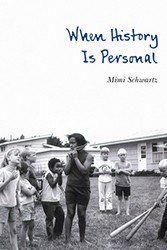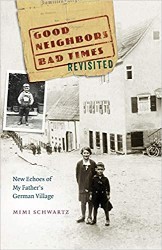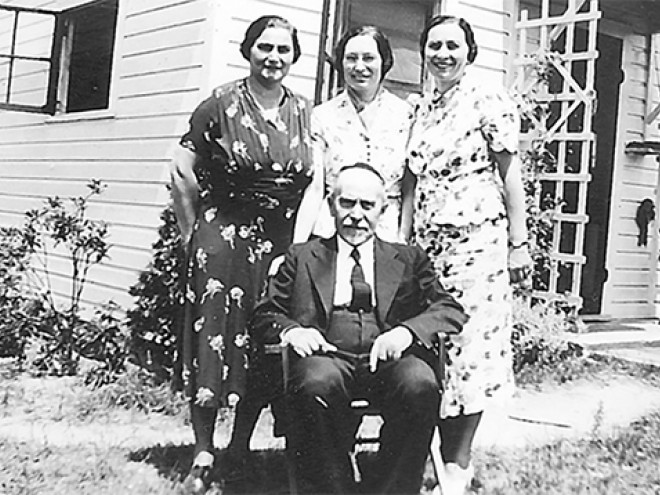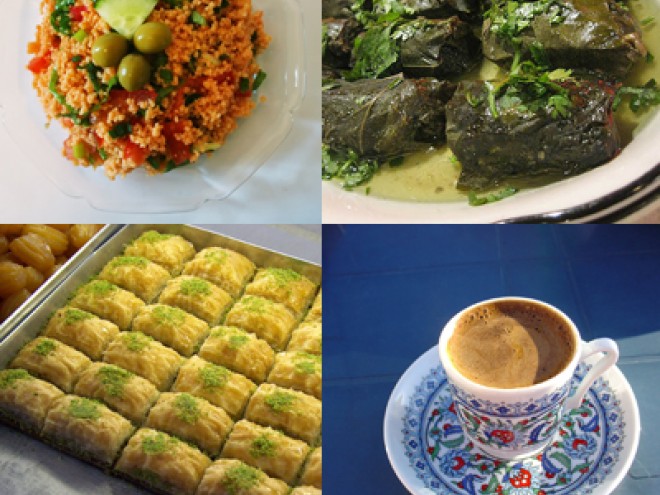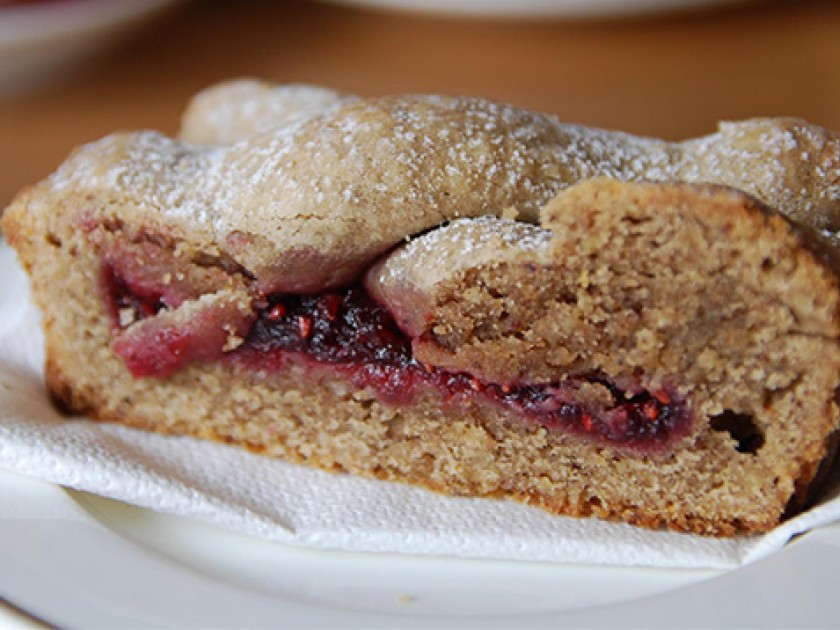
Image via Alpha/Flickr
Mimi Schwartz is the author of When History Is Personal. She is writing here as part of Jewish Book Council’s Visiting Scribe series.
When I was doing research in the late 1990s for my book Good Neighbors, Bad Times, everyone I met from my father’s village seemed to serve me linzertorte. Not the fancy cakes of Vienna and Berlin, intricate and airy — but solid, earthy ones made by the descendants of farmers’ wives and cattle dealers, who lived on the edge of a German forest so thick it looks almost black. Hence the name Schwarzwald, or Black Forest.
I ate this Black Forest Linzertorte in scores of living rooms and kitchens on three continents — served by village Jews who fled the Nazis, and by their former Christian neighbors, still in the village today.
When my father was a boy in the early 1900s, Jews made up half of his village of 1,200. Sixty years after Hitler, the one Jewish family were new arrivals from Russia, and they served me chocolate-covered prunes. The Kurdish family living in my uncle’s former house served Turkish coffee with baklava. All delicious — but without a shared history.
Only in the homes of those who remembered life before Hitler did food became the bridge to the good memories that my father invoked in Queens, New York — to where he fled, and I grew up. He talked about how he’d go to the fields with “a book in one pocket, and a slice of linzertorte in the other” and how “everyone got along before Hitler.” Years later, I heard his echo in Washington Heights, as eighty-six year-old Sophie Mark, my father’s classmate, apologized for not baking a linzertorte (“arthritic hands”) and reminisced about their village where “Each knew each. The whole town, the Gentiles too. It was very nice. Then Hitler came.”
When I visited the village in 1995, food became the way we traveled into that former world. The farmer’s daughter, a Catholic who refused to join Hitler’s youth group, conjured up “the Jewish matzoh with its flat brown bumps. It was like poetry.” And the former mayor’s wife remembered berches, the bread that everyone prepared at home: “We Christians made it with milk. They used water, something about no milk and meat. But we all had it baked by Otto, the baker, in his oven on the village’s one street.”
Distinctions of “we” and “they” made my American guard go up: Did everyone really get along? Was this nostalgia for a past that never was? But then out came the linzertorte, some say the oldest cake in Europe, and it was home-baked and served with a smile. I bit into the familiar wall of ground almonds, flour, cocoa, with a hint of cloves, cinnamon and lemon, and reached the raspberry jam. I never had to fake my pleasure. Here was the linzertorte I grew up loving in Queens, baked by my mother and aunts with the family recipe that had crossed oceans. And somehow, long after Hitler, in homes of Christian strangers in the Schwarzwald, I tasted continuity and caring.
With each bite, I listened more carefully, with less skepticism, as those who had been good neighbors (none from the Nazi Party) remembered their shared lives, side by side for generations. Like my father’s next-door neighbor who pointed out the window where, as he remembered it, his mother and my grandmother sat in the garden together, knitting and drinking a kaffee on a warm summer day. It all seemed possible, even what Sophie and others said about their friends: What could they do? They were helpless like us!
My friend Suzanne, from pre-war Vienna, liked to say, “But this is not a linzertorte served in the great cafes I knew as a child.” No, this is the recipe of village women with no time for the elegance of a dozen perfect strips of dough for latticework, no access to exotic spices, no inclination to waste egg yolks for whipped egg whites only. But they did measure and stir something reliably delicious and share it with “we” and “they,” as if the pleasure of eating together really mattered. As if how else can we go on?
The recipe is simple and foolproof — and I bake it often. It has never failed me.
Black Forest Linzertorte — serves 8 to 10
Cooking Implements:
- 1 ten-inch springform pan
- Waxed paper
Ingredients:
- 1 cup butter, softened
- 1 cup sugar
- 1 tsp. grated lemon peel
- 2 eggs
- 1½ cup sifted flour (start with two cups)
- 1 cup unblanched almonds, ground
- ½ tsp. powdered cinnamon
- ½ tsp. powdered cloves
- 1 tsp. cocoa
- ¼ tsp. salt
- 12 – 13 oz. raspberry preserves (I like Bonne Maman)
- A sprinkle of confectioners sugar
Directions:
1. Beat butter and sugar together until creamy.
2. Add lemon peel.
3. Beat in eggs, one at a time.
4. Gradually add flour, almonds, spices, cocoa, and salt.
5. Beat until thoroughly blended and smooth. Note: If dough is very soft, chill for 20 – 30 minutes.
6. Separate ¼ of dough for lattice on top.
7. Roll the rest into a ¼ inch thickness between sheets of waxed paper.
8. Line the pie dish with the dough. If your pan is not no-stick, rub a little butter around first. Note: If it doesn’t roll perfectly, no problem. I often do it piecemeal, especially on the walls.
9. Add raspberry jam and spread out evenly.
10. Make strips from the remaining dough and lay them across the torte. I usually do a pinwheel, but any design will work.
11. Bake in the oven at 300 degrees for about an hour.
12. Sprinkle with a little confectioners sugar for effect.
Mimi Schwartz is a professor emerita at Stockton University. Her books include the award-winning Good Neighbors, Bad Times: Echoes of My Father’s German Village); Thoughts from a Queen Sized Bed (JCC book club pick) and Writing True: The Art and Craft of Creative Nonfiction. Ten of her essays have been Notables in the Best American Series, including four from this book.
